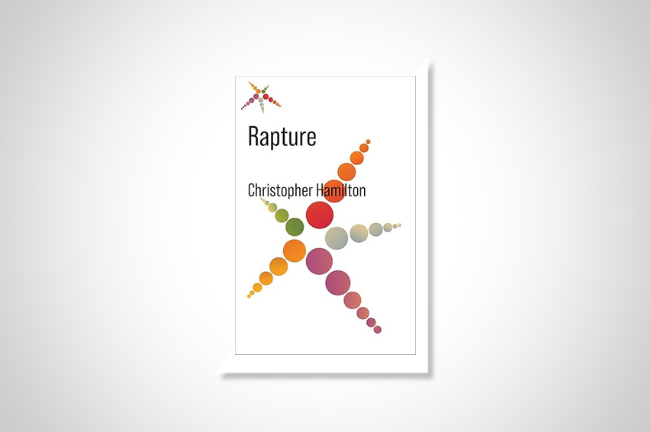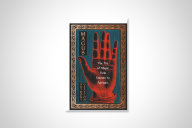You have /5 articles left.
Sign up for a free account or log in.

Columbia University Press
It may spare potential readers of Christopher Hamilton’s book Rapture (Columbia University Press) some confusion to take note of the subject headings for it in the Library of Congress catalog. The first, “Rapture (Christian eschatology),” refers to one of the better-known apocalyptic scenarios, in which the faithful are suddenly transported to heaven before the world succumbs to mayhem on a scale much larger than usual.
The author (a professor of philosophy at King’s College London) mentions belief in “the rapture” just once in the book, in passing—and that is to make clear it is not what he has in mind and will not be discussing the matter at all. Another subject heading given for Hamilton’s book is “Religious awakening—Christianity.” This seems broader, perhaps, but is no less perfectly irrelevant.
At times it proves necessary to read more than the title of a book to have any idea what it is about, and I am afraid this is one of those occasions.
Hamilton is forthright enough about the nature of his topic. “To be enraptured,” he writes early on, “is to be taken out of oneself, lost in an experience, a sight, or whatever, and yet to be returned to oneself unburdened, with a sense of freedom.” No theology is implied. Someone who has passed through a rapturous state might find mystical or devotional language appropriate when trying to talk about it. But most of the figures Hamilton writes about—for example, Friedrich Nietzsche, Werner Herzog, Virginia Woolf and Philippe Petit, who walked across a tightrope stretched between the World Trade Center buildings in 1974—got along without such language.
The author himself identifies with the “broadly humanist” stance that George Orwell stakes out in his essay on Tolstoy and Shakespeare.
“On balance,” Orwell says, “life is suffering, and only the very young or the very foolish imagine otherwise … The [religious] aim is always to get away from the painful struggle of earthly life and find eternal peace in some kind of Heaven or Nirvana. The humanist attitude is that the struggle must continue and that death is the price of life.”
And yet rapture is not precluded. We may be wired for it. Hamilton mentions the sexual embrace as rapture at its most fully absorbing, though not its precondition. The experience of recovering from a period of illness—of finding oneself able and eager to do familiar things once again—can also be rapturous: “I suddenly become attentive to the small things in life,” he writes, “to their irreplaceable value, and then I grasp that these are things that are a source of value in life generally.”
This can feel like a revelation, for as long as it lasts, which is never long enough. (The miraculousness of ordinary existence tends to disappear once it resumes at regular pace.) Rapture is exhilarating, but it reaches deeper into the individual’s experience of the world than a mood can. It is a bolt of lightning that flashes in the murk of everyday life, revealing what is otherwise lost to overfamiliarity.
An artist of great gifts (and the acrobat on a terrifyingly high wire qualifies) seems better suited to grasping and communicating the experience of rapture than most of us—philosophers included, in Hamilton’s judgment. A note of disappointment and exasperation with his discipline runs throughout his essays.
“Philosophy,” he writes, “is in many ways very bad at nourishing the imagination, accepting flights of fancy, of fantasy.” This leaves the profession devitalized, he complains, incapable of conceiving either the philosopher or the layperson as “a whole human being with all that this entails by way of hope, fear, longing, fantasy, blood, sweat, and tears, with a largely obscure and confusing inner life, recalcitrant to improvement and stubborn in its obsessions and desires.”
For Hamilton, the obvious exceptions are Nietzsche and Simone Weil: Their openness to rapture—as a personal experience, but also as a challenge in comprehending the world—makes them artists almost as much as philosophers. Weil in particular is a challenging figure for Hamilton’s project, given the secular and humanist sensibility emphasized above. Weil’s tortuous spiritual path—from Jewish socialist to Catholic not-quite convert, with extremes of self-denial in solidarity with the oppressed—was marked by mystical experiences of compassion, suffering and the love of beauty. (I’ve written more on her here.)
Weil understood her own raptures in theological terms that Hamilton takes seriously without embracing them as his own. (He also avoids psychologizing her beliefs and behavior, which is difficult temptation for the nonbeliever to resist.) The author models his approach on the inventor of the essay as a literary form, Michel de Montaigne, who combined wide-ranging sympathy for the variousness of human life with skeptical irony about our powers of rationalizing our assumptions.
It makes sense, then, that Hamilton challenges his own predominantly secular outlook with the example of someone whose understanding of the world pushed in a radically opposed direction. Rapture, whatever its metaphysical provenance, “can be a disruptive force,” he writes, “because it is expressive of a certain energy for life. The experience of rapture is that of a hunger for experience, a hunger that can be, even if it need not always be, imperious and demanding.”
The author’s expressed purpose is to open the reader to the possibility of rapture, not as an escape from the world, but to live more fully while here. The book will find readers—by word of mouth, perhaps, since the library catalog won’t be of much help.








